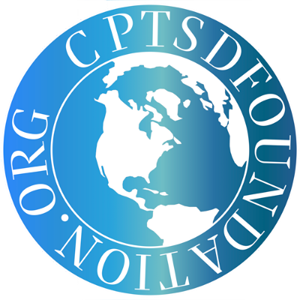The lack of a complex post-traumatic stress disorder (CPSTSD) diagnosis in the Diagnostic and Statistical Manual of Mental Disorders, Fifth Edition (DSM-5), the diagnostic resource used in the United States, can cause detrimental consequences. Without a CPTSD diagnosis, people may more easily be misdiagnosed and receive inadequate mental health treatment. Instead of improving, a person may get worse. A separate CPTSD diagnosis or a CPTSD specifier (a clarifying extension to a diagnosis) of post-traumatic stress disorder (PTSD) in future editions of the DSM-5 may prevent many unnecessary declines in mental health.
Misdiagnosis With Emotionally Unstable Personality Disorder
A frequent misdiagnosis of people with CPTSD is Emotionally Unstable Personality Disorder (EUPD), which was known as Borderline Personality Disorder. There is overlap between EUPD and CPTSD, both of which involve early trauma. Both diagnoses also entail dissociation; “anxiety, anger, or depression;” challenges with emotional regulation; self-destructive actions; and avoidance.
However, CPTSD and EUPD are different from one another. While EUPD relates to fear of abandonment, CPTSD involves fear of relationships. People with EUPD tend not to have a stable sense of identity. In contrast, individuals with CPSD have a distorted view of themselves. In addition, unlike EUPD, CPTSD entails challenges trusting individuals, “negative views of self or the world, nightmares or insomnia, and flashbacks.” Misdiagnosing CPTSD as EUPD could result in improper treatment, as some of the CPTSD-specific symptoms would not be addressed by treatment for EUPD.
Case Vignette
Let’s look at a case vignette, as individual cases can really show what may happen. In the United States, an individual (Let’s call her BC) with probable CPTSD received different, conflicting diagnoses and thus inadequate treatment from mental health professionals because CPTSD does not exist as a diagnosable condition in the United States. A little more than a year after traumatic job experiences (including a firing), BC began therapy.
BC’s initial therapist diagnosed BC with just depression. BC truly felt that she experienced more than just depression. BC truly thought that she had PTSD and CPTSD symptoms. Meanwhile, BC’s therapist refused to say that BC had PTSD symptoms. BC’s therapist often ended sessions by asking BC about BC’s upcoming week, a question that could be a helpful part of treatment for depression. BC stopped meeting with that therapist.
BC began to be treated by a new mental health professional, who diagnosed BC with adjustment disorder. Depression and adjustment disorder have overlapping symptoms, but are different. Unlike depression, adjustment disorder can often be connected to a specific incident. Adjustment disorders are temporary, resolving within six months. Depression can last from an episode of around two weeks to something long-term that cannot be resolved without medical treatment. BC stopped meeting with her second therapist.
Then, BC started to meet with a third, her current, therapist, who diagnosed BC with unspecified trauma and stressor-related disorder (UTSRD), depression, and anxiety. The new therapist does not believe that BC has adjustment disorder because it has been almost two years since BC’s termination. The therapist recognizes that BC has PTSD symptoms but is not eligible for a PTSD diagnosis because BC does not meet criterion A, the type of trauma that is required for a PTSD diagnosis. UTSRD makes sense as a diagnosis because BC does not meet full PTSD criteria. Even so, this mix of diagnoses may not truly get at the CPTSD symptoms that are not PTSD symptoms.
As a result of misdiagnoses/lack of CPTSD diagnosis and thus insufficient treatment, BC’s mental health continues to decline. BC is still overly fixated on her old office. She can easily turn any conversation to something about her old office. Her constant fixation and talking about that office cause major problems between BC and BC’s loved ones. BC continues to have trouble sleeping and begins to have major self-esteem issues. Over time, it has gotten much more difficult for BC to do anything. On many days, BC cries because she is distraught about her old office and her life. She is irritated by the smallest things. More often, BC has suicidal thoughts and even developed plans to kill herself, something that she had not done until then. Frequently, BC does not see any point in her life. BC feels that BC and the world would be better off without her in it. If there were a CPTSD diagnosis in the DSM-V, BC could have improved at least somewhat instead of declining.
BC seems to have CPTSD. She has PTSD symptoms, including flashbacks, avoidance of triggers of trauma, and frequent negative sentiments and feelings. She also has additional CPTSD-specific symptoms, including negative self-views and major challenges with relationships.
Untreated CPTSD Symptoms Can Worsen
BC’s situation is not unique because if CPTSD is not treated, CPTSD symptoms may worsen. CPTSD can cause brains to change in such ways that cause people with CPTSD to struggle. Due to complex trauma, one’s amygdala, which helps with the processing of emotions, grows, potentially resulting in a person’s inability to tell the difference between real and fake dangers. Meanwhile, CPTSD makes the hippocampus smaller, decreasing a person’s capability of processing and keeping accurate memories. There is a greater chance of fragmented memories focusing on “anything negative or scary from the past.” Complex trauma harms the functioning of the prefrontal cortex, which helps people be organized, regulate their emotions, and make smart choices. Complex trauma can also harm the HPA axis, resulting in mood swings and more. Alterations of the brain lead to “intrusive memories, [n]ightmares, [f]lashbacks, [a]voidance of anything (people, places, sensations, etc.) that recalls the complex trauma you endured, [n]egative moods that involve dissociation, hopelessness, guilt, shame, and an inability to find pleasure in what you once enjoyed,” and “[b]eing at higher risk for depression which intensifies C-PTSD symptoms while introducing new physical signs” Untreated CPTSD is also linked with “[d]iabetes, [h]eart disease, [s]troke, [h]igh blood pressure,” and “[a]utoimmune diseases.”
Final Thoughts
Many problems could be prevented by a CPTSD diagnosis or CPTSD specifier in the DSM. The new diagnosis/specifier would raise awareness, resulting in people getting the proper diagnosis and appropriate treatment. It can be very difficult for a person to receive sufficient treatment without the correct CPTSD diagnosis.
Photo by Jonas Jacobsson on Unsplash
Guest Post Disclaimer: Any and all information shared in this guest blog post is intended for educational and informational purposes only. Nothing in this blog post, nor any content on CPTSDfoundation.org, is a supplement for or supersedes the relationship and direction of your medical or mental health providers. Thoughts, ideas, or opinions expressed by the writer of this guest blog post do not necessarily reflect those of CPTSD Foundation. For more information, see our Privacy Policy and Full Disclaimer.





This is a very important article. Despite decades in therapy and being treated for anxiety, I finally got a PTSD diagnosis at age 62. I know I have CPTSD. 65 now and I am finally receiving, at my own initiative, appropriate and long overdue treatment. As a result I am slowly feeling better physically and emotionally. But the lack of official recognition in DSM 5 is disgraceful. This must be affecting Nd impacting so many people. I live in Australia. Thank you for your post. It is calming to know that professionals are in our corner.